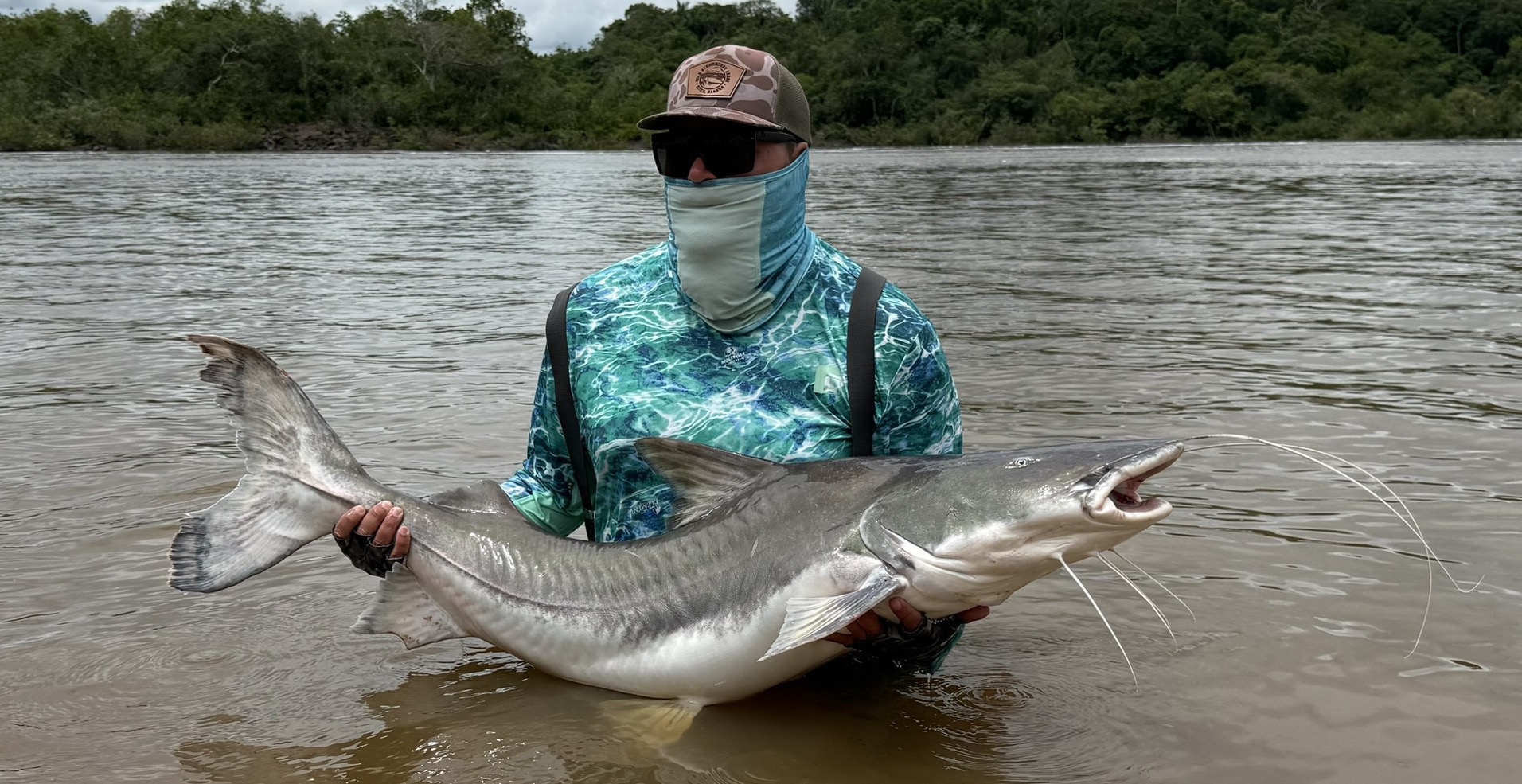[email protected] | 866-832-2987
Piraíba
The River Monster of the Amazon
Piraíba
The River Monster of the Amazon
Guide
The piraíba is the largest catfish in the Amazon basin—and one of the largest freshwater fish in the world. A true giant of the deep, this migratory predator can reach lengths of over 8 feet and weigh over 350 pounds. These massive fish are known for their brute strength, extreme stamina, and deep, slow power, making them a holy grail for serious catfish anglers.
Interesting Facts & Notes
The piraíba verified world record is 341 and 341.5 lbs in Brazil.
Juveniles are often called filhotes or piratinga, and are sometimes confused with other large catfish.
Piraíba are true long-distance migrators, traveling thousands of kilometers from headwaters to estuaries.
The species’ name means “thread-finned,” referencing the long trailing filaments of the caudal fin.

Where to Catch
You can target piraíba on the following Acute Angling trip:
Rio Aripuanã — Multi-species hotspot with excellent piraíba potential.
Quick Facts
| Attribute | Description |
|---|---|
| Scientific Name | Brachyplatystoma filamentosum, B. capapretum |
| Common Names | Piraíba, Filhote, Piratinga, Blacktail Piraíba |
| Size Range | Commonly 20-100 lbs; up to 350+ lbs |
| Region | Amazon Basin (Rio Madeira, Rio Negro, Tocantins, Solimões, Aripuanã, Xingu) |
| Habitat | Deep river channels, confluences, and fast-moving mainstem pools |
| Behavior | Migratory predator; long-distance seasonal movement |
| Coloration | Gray to silver body; blacktail species has darker tones and fins |
| Aggression | Low to moderate – relies on ambush and opportunism |
| Feeding Habits | Piscivore – preys on large baitfish and catfish |
| Gamefish Status | Legendary – considered the most powerful catfish in the Amazon |
Physical Appearance
Adult piraíba are thick-bodied and powerfully built, with broad heads and long, paddle-like tails. Their caudal fins often feature long trailing filaments, exhibiting darker pigmentation and is typically more slender. They have long maxillary barbels used to detect prey in deep, murky waters.
How to Identify
Filhote (juvenile) – Light gray body with faint banding and longer barbels.
Adult Piraíba – Thick-bodied, rounded head, lighter coloration, silver-gray skin.
Blacktail Piraíba (B. capapretum) – Darker coloration, especially on tail and fins; body more streamlined.

Fishing Tactics: How to Catch Piraíba
Recommended Techniques
Anchor-and-drop: Use heavy tackle to fish deep channels with strong current.
Drift fishing: Present cut bait slowly along structure, ledges, or bottom depressions.
Spot-and-hold: Once hooked, be prepared for a drawn-out, punishing battle—piraíba rarely surface quickly and can strip line for minutes on end.
Suggested Gear
Rod & Reel: Extra-heavy conventional rods with strong drag saltwater reels (e.g., Penn International or Shimano Tiagra).
Line: 100-130 lb braided line.
Terminal Tackle: 6/0–12/0 circle hooks, sliding sinkers (1–16 oz depending on current), strong swivels.
Bait: Variety of smaller fish species can be used as bait.
Join the Adventure
Ready to take on the Amazon’s most powerful freshwater fish? Join us on a world-class catfish adventure and test your strength against a true river monster.
Contact us today:
📞 (866) 832-2987
Related Reading
References
Lundberg, J. G., & Akama, A. (2005). Brachyplatystoma capapretum, a new species of giant catfish.
Goulding, M. (1981). Amazon: The Flooded Forest.
Santos et al., 2006.
Ferreira et al., 1998.
Barthem & Goulding, 1997.
Zeinad, A. K. & Prado, R. A. (2012). Peixes fluviais do Brasil: espécies esportivas
